Standard Operating Procedure for Re-Racking Casks and Managing Operational Losses
Objective
This SOP outlines the steps for performing a re-rack of casks and managing operational losses effectively.
Key Steps
Step 1: Prepare for Re-Rack 0:00
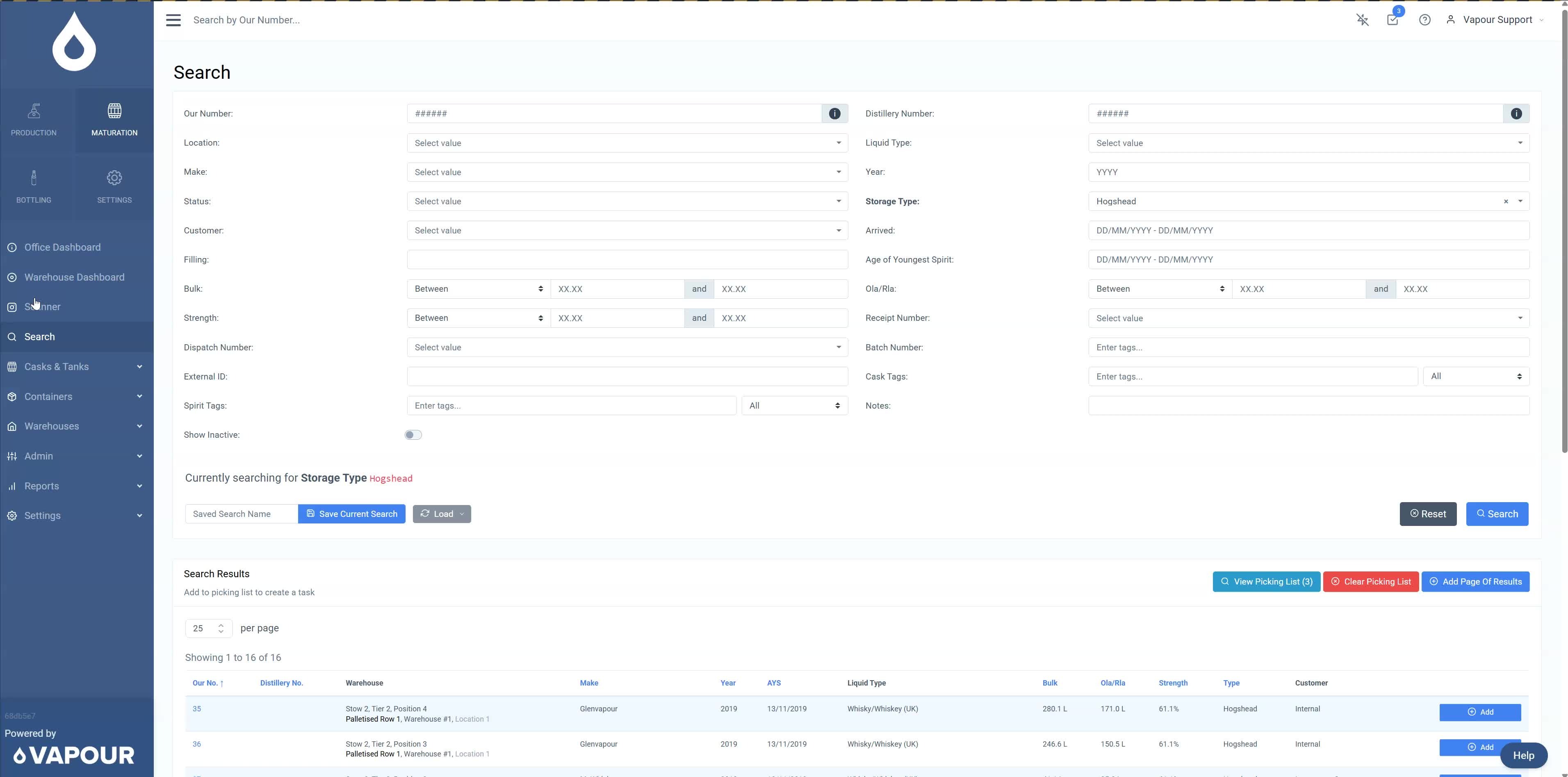
Review the current cask inventory and select the casks for re-racking.
Ensure you have at least one empty cask and the necessary full casks ready for the task.
Step 2: Create Re-Rack Task 0:25
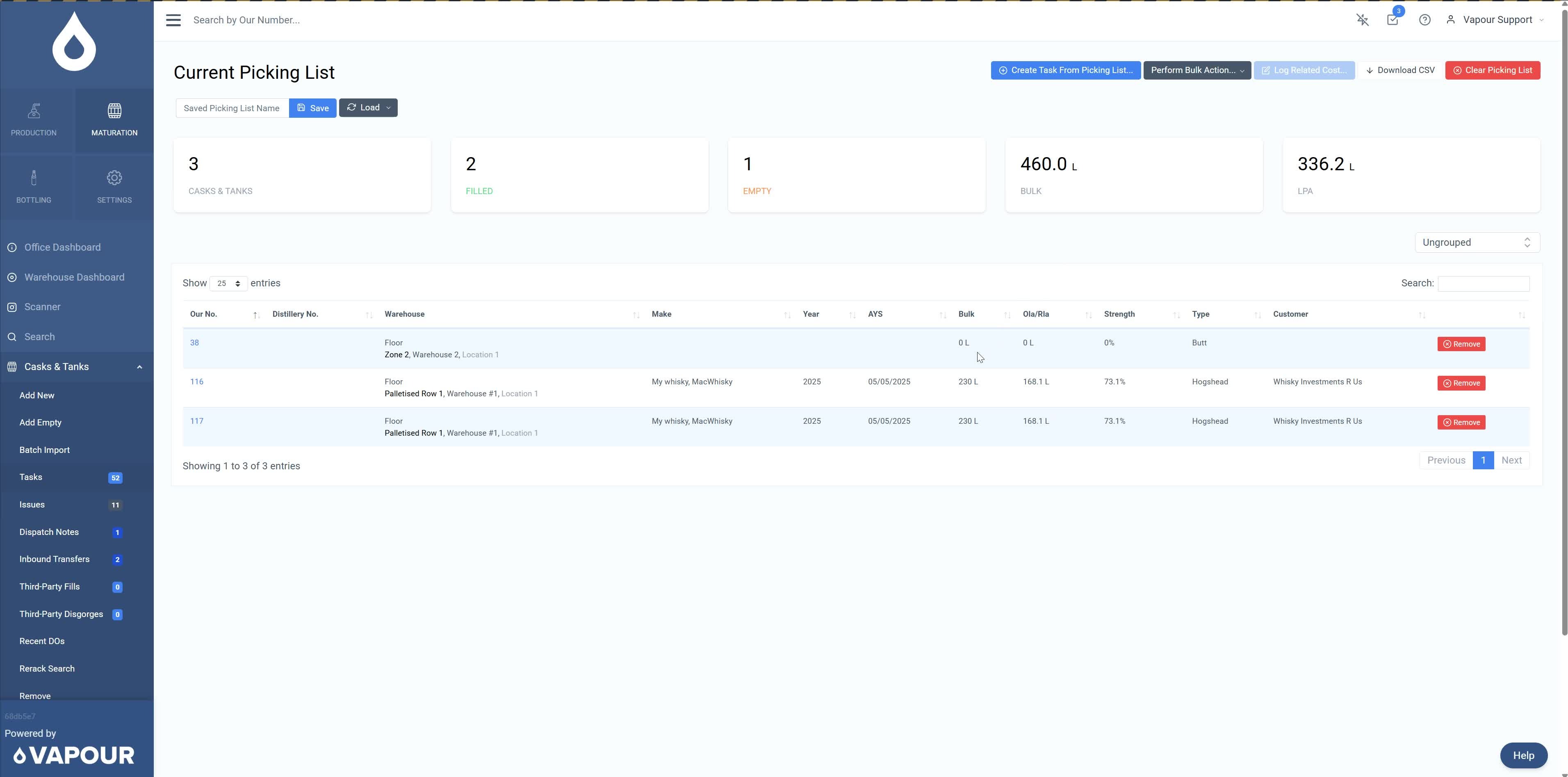
Initiate the re-rack task in the system.
Set the task as non-billable and select the 'many to one' option.
Step 3: Select Casks for Re-Rack 0:43
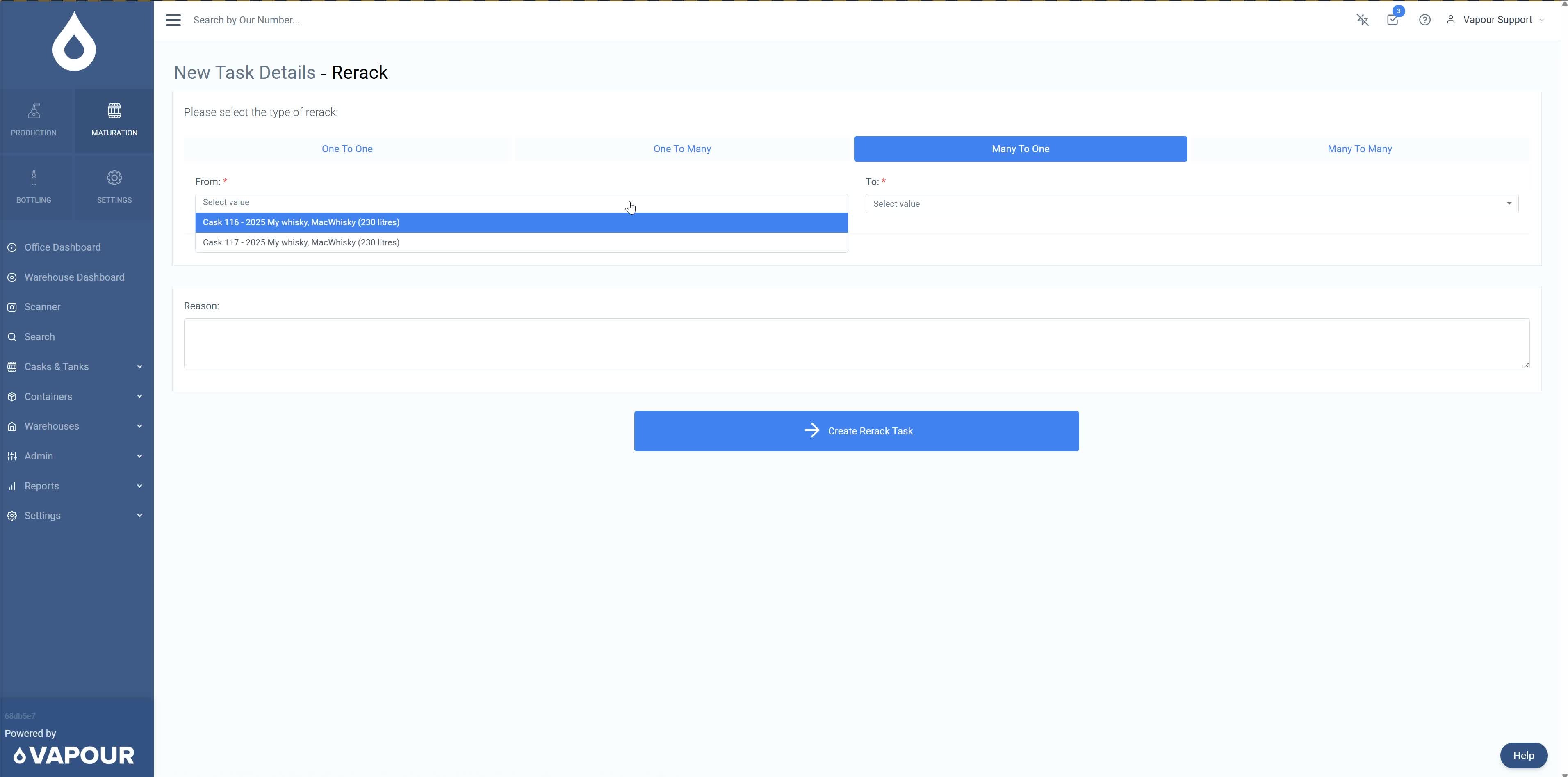
Choose the casks that contain liquid and the empty cask for the re-rack.
Decide whether to leave any remnant liquid in the casks.
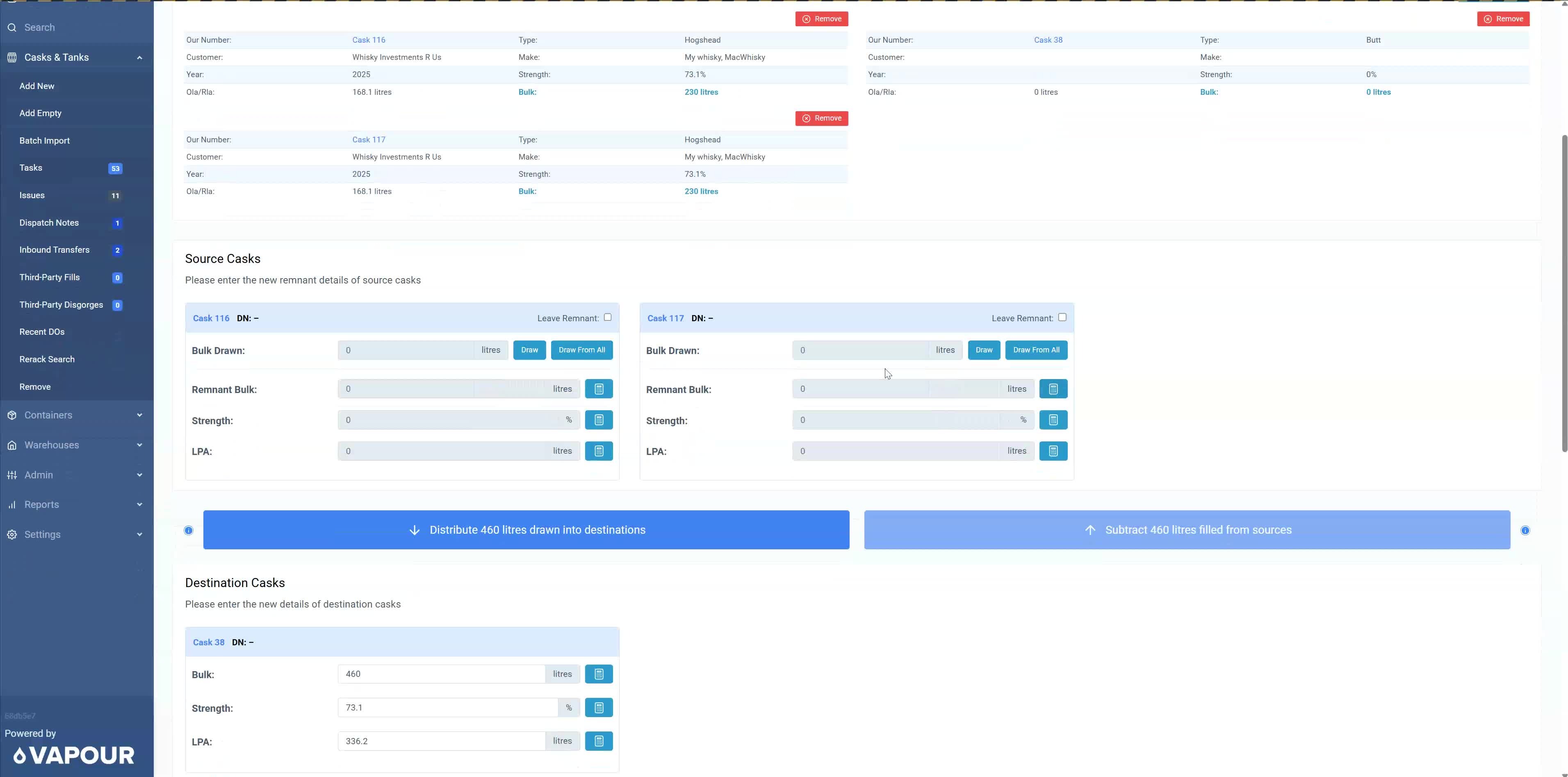
Mark all selected casks as collected.
Confirm the total volume to be drawn down into the destination cask.
Step 5: Update Cask Levels 1:37
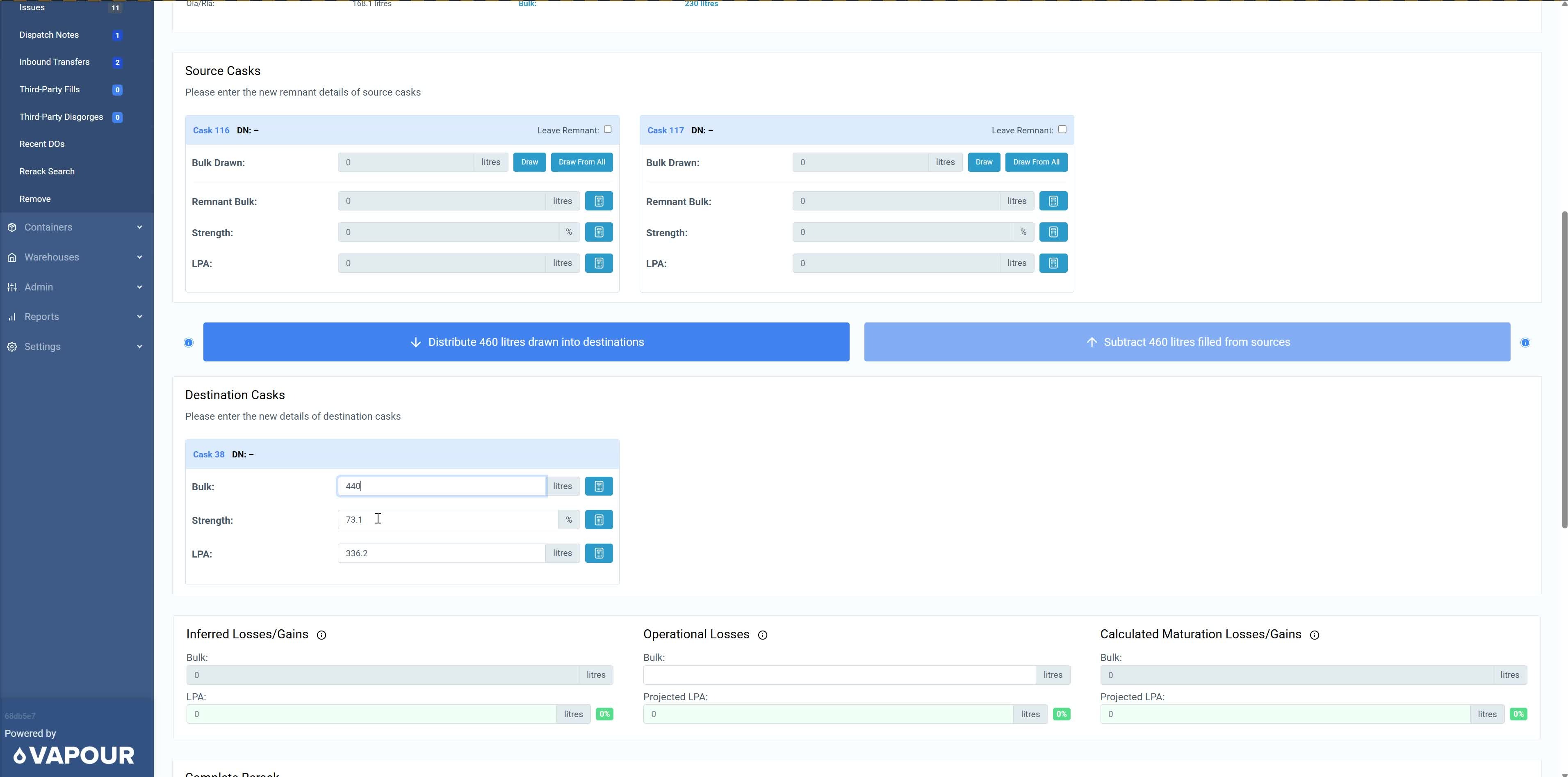
Use a calculator to determine the new alcohol levels in the destination cask.
Save the updated levels in the system.
Step 6: Record Operational Losses 2:19
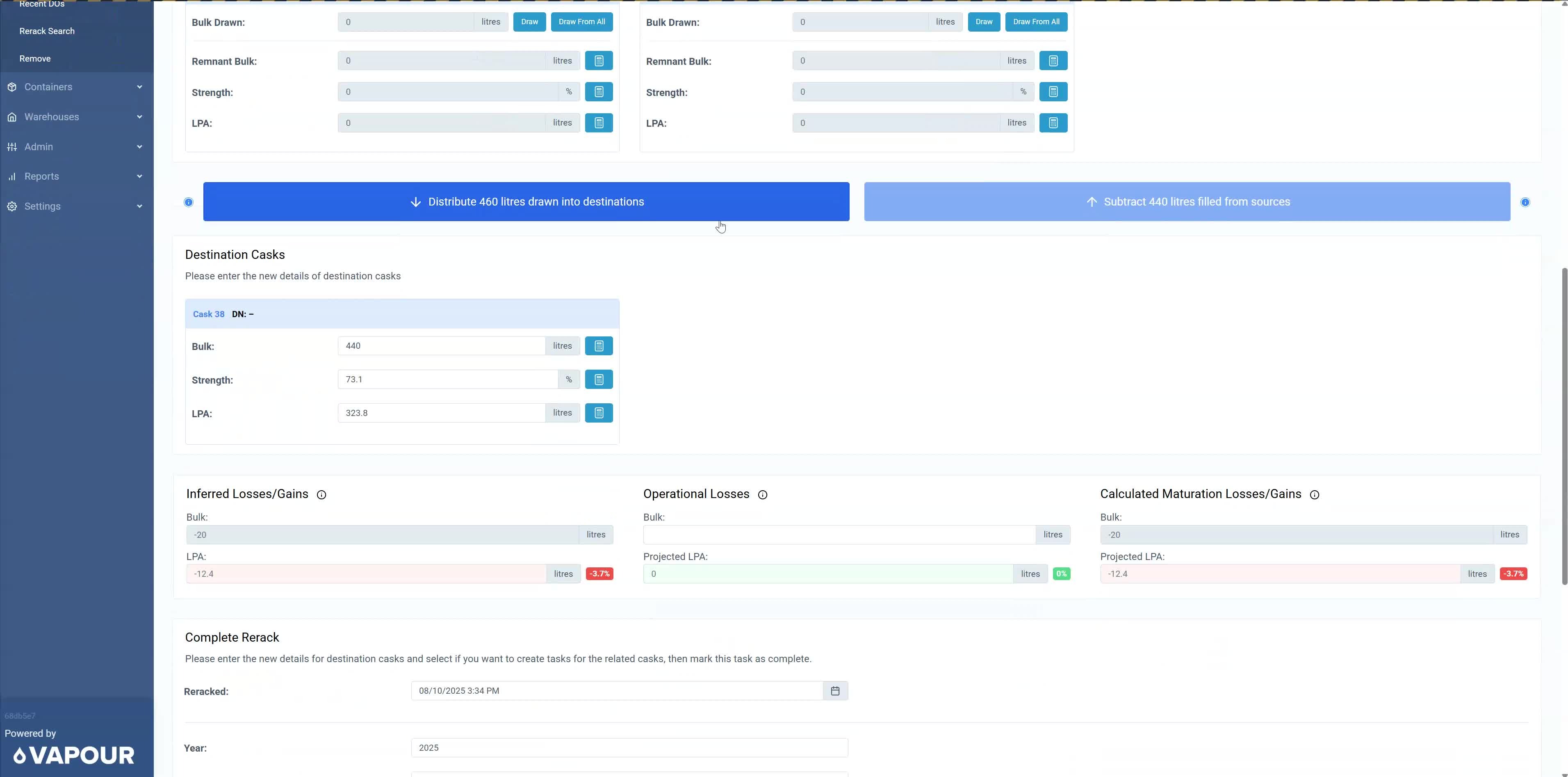
If applicable, record any operational losses (e.g., spills) in the system.
Step 7: Adjust Maturation Losses 2:31
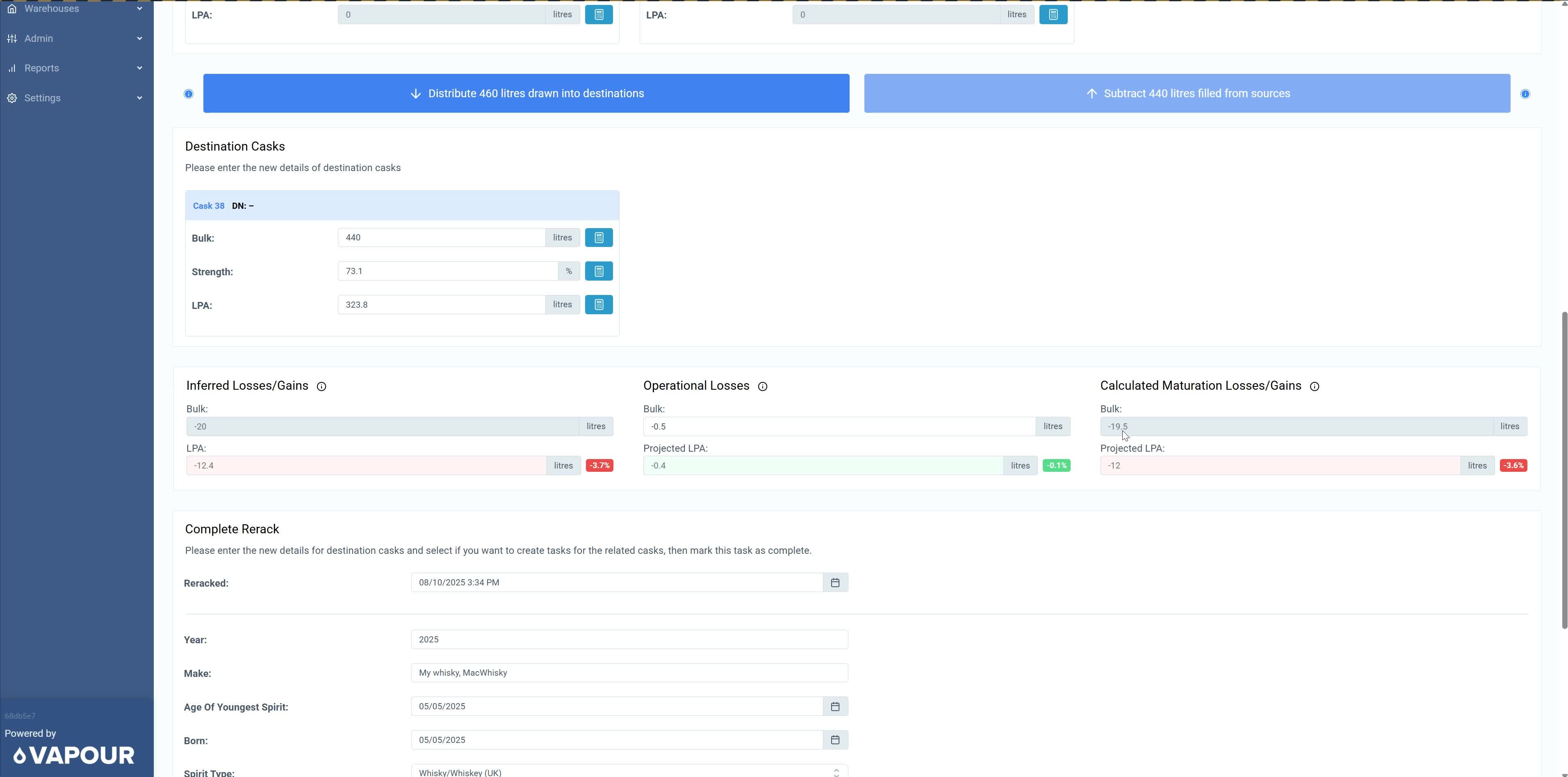
Ensure that the system updates the overall maturation losses based on the recorded operational losses.
Step 8: Complete the Task 2:47
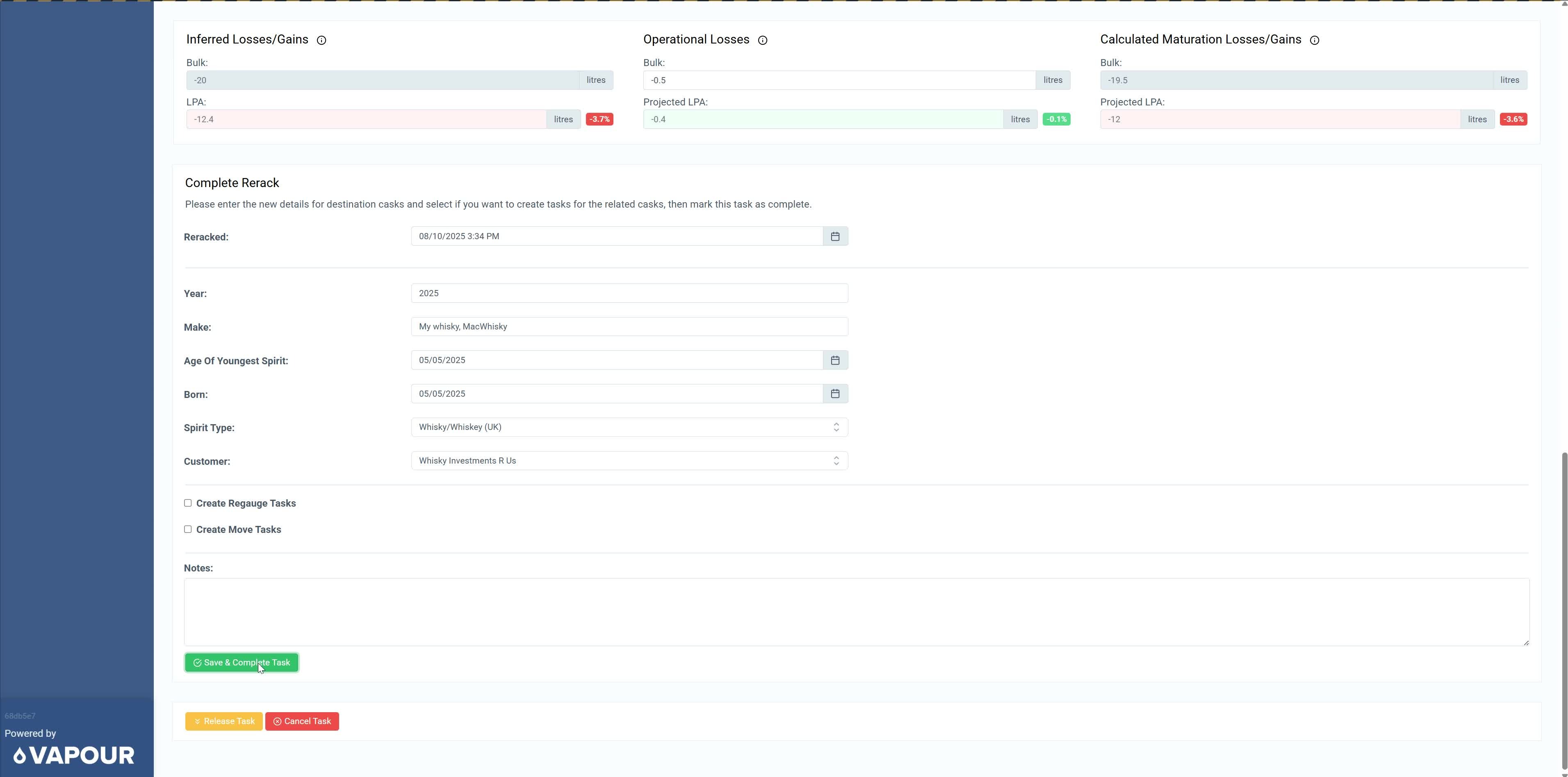
Save and complete the re-rack task in the system.
Step 9: Review Cask History 3:21
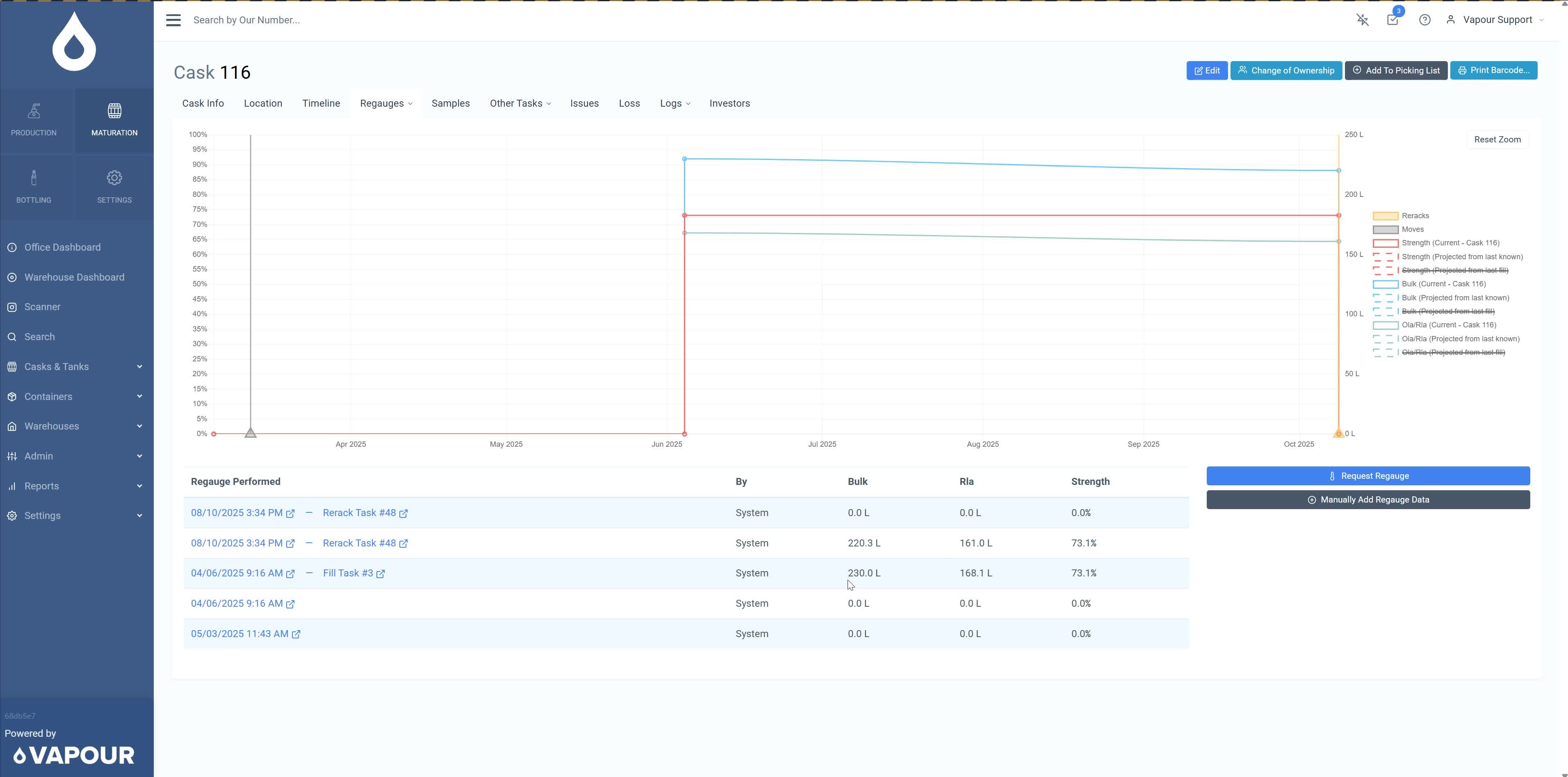
Check the history of the casks to confirm the updates made during the re-rack.
Step 10: Generate Reports 4:19

Generate the activity report to review re-rack details and losses.
Generate the HMRC report for compliance purposes.
Step 11: Access Knowledge Base 6:07
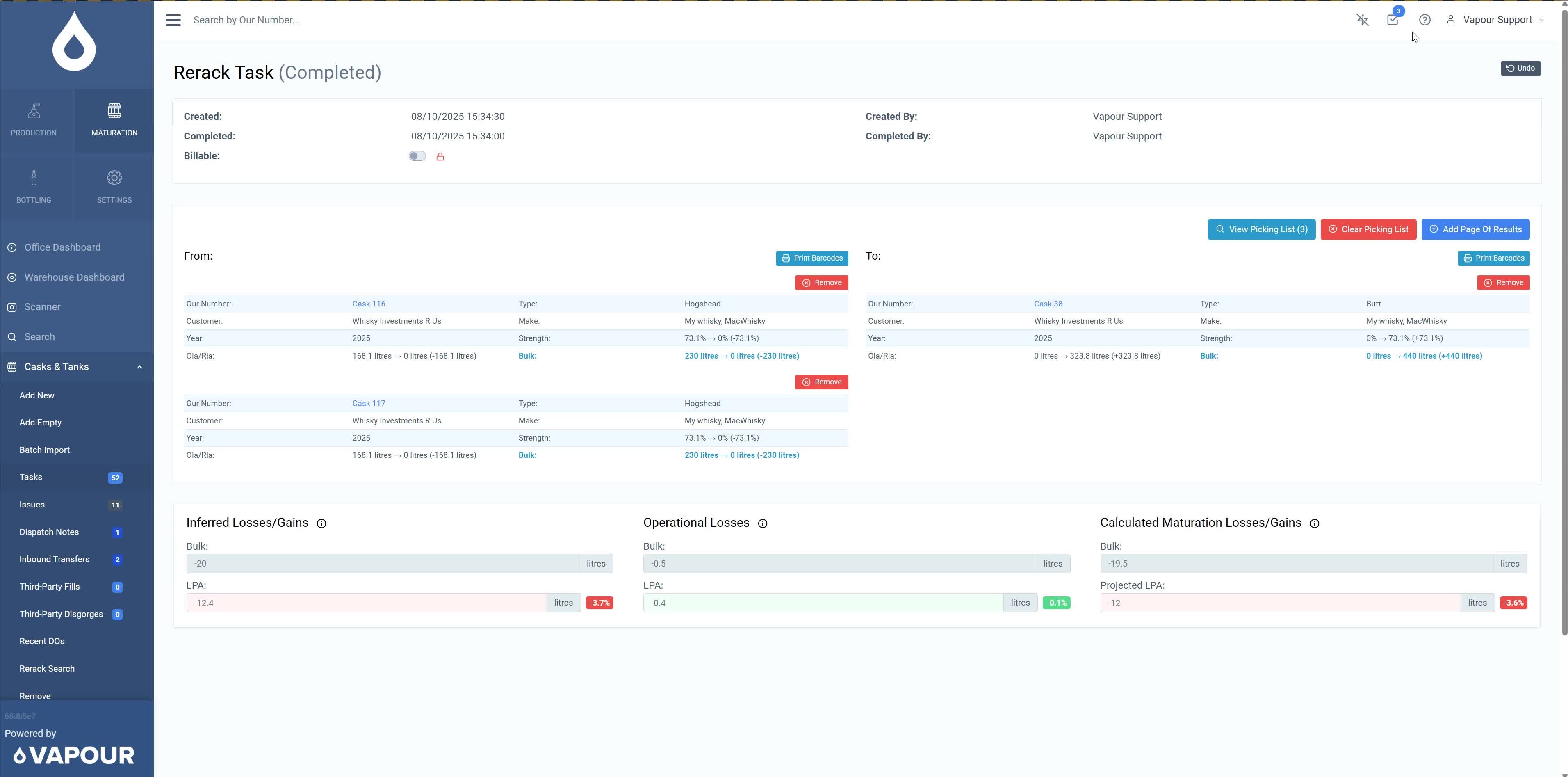
Refer to the knowledge base for additional guidance on disgorging tasks and managing maturation losses.
Cautionary Notes
Always double-check the volumes before finalising the re-rack to avoid discrepancies.
Ensure that all operational losses are accurately recorded to maintain compliance and inventory accuracy.
Tips for Efficiency
Familiarise yourself with the reporting tools to quickly generate necessary documentation.
Regularly review the knowledge base for updates on procedures and best practices.
Link to Loom
Was this article helpful?
That’s Great!
Thank you for your feedback
Sorry! We couldn't be helpful
Thank you for your feedback
Feedback sent
We appreciate your effort and will try to fix the article